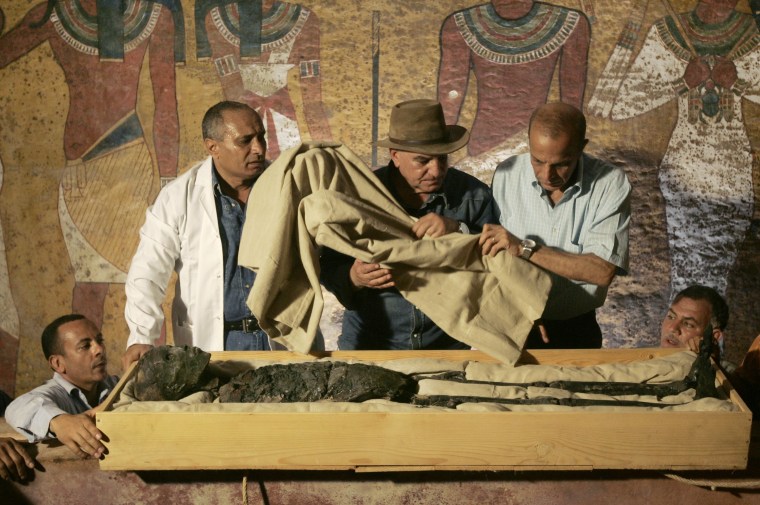Egypt’s famed King Tutankhamun suffered from a cleft palate and club foot, likely forcing him to walk with a cane, and died from complications from a broken leg exacerbated by malaria, according to the most extensive study ever of his mummy.
The findings were from two years of DNA testing and CT scans on 16 mummies, including those of Tutankhamun and his family, the team that carried out the study said in an article to be published Wednesday in the Journal of the American Medical Association.
It also established the clearest yet family tree for Tut. The study said his father was most likely Akhenaten, the pharaoh who tried to revolutionize ancient Egyptian religion to worship one god — while his mother was a still unidentified sister of Akhenaten.
Tut, who became pharaoh at the age of 10 in 1333 B.C., ruled for just nine years at a pivotal time in Egypt’s history. While a comparatively minor king, the 1922 discovery of his tomb filled with stunning artifacts, including the famed golden funeral mask, made him known the world over.
Speculation had long swirled over why the boy king died at such a young age. A hole in his skull long fueled speculation he was murdered, until an X-ray scan in 2005 ruled that out, finding that the hole was likely from the mummification process. The scan also uncovered the broken leg.
Probably needed canes to walk
The newest CT scans and DNA tests revealed a pharaoh weakened by congenital illnesses finally done in by complications from the broken leg aggravated by severe brain malaria. The team said it isolated DNA of the malaria parasite — the oldest such discovery.
Slideshow 6 photos
King Tut revealed
“A sudden leg fracture possibly introduced by a fall might have resulted in a life-threatening condition when a malaria infection occurred,” the article in the Journal of the American Medical Association concluded. “Tutankhamun had multiple disorders... He might be envisioned as a young but frail king who needed canes to walk.”
Like his father, Tutankhamun had a cleft palate. He also had a club foot, like his grandfather, and suffered from Kohler’s disease in which lack of blood flow was slowly destroying the bones of his left foot.
Feminine attributes ruled out
The studies also disproved speculation that Tutankhamun and members of his family suffered from rare disorders that gave them feminine attributes and misshapen bones, including Marfan Syndrome, a connective tissue disorder that can result in elongated limbs.
The theories arose from the artistic style and statues of the period, which showed the royal men with prominent breasts, elongated heads and flared hips.
“It is unlikely that either Tutankhamun or Akhenaten actually displayed a significantly bizarre or feminine physique,” the article said.

